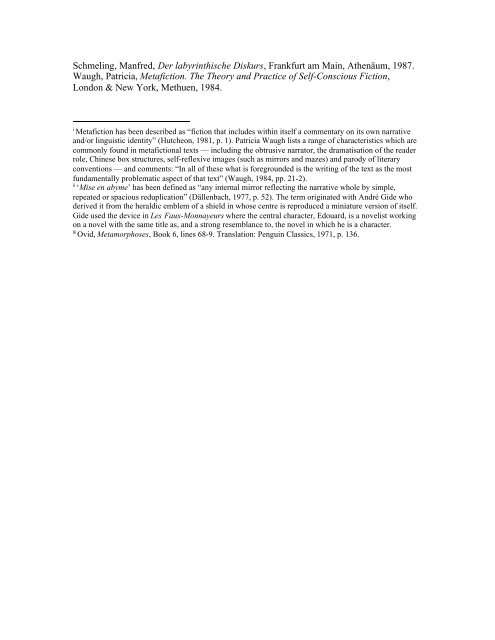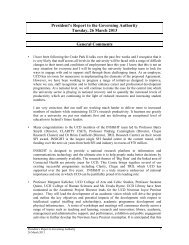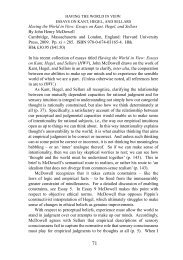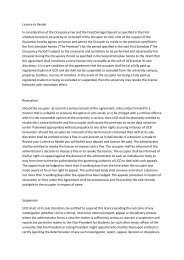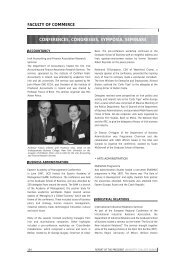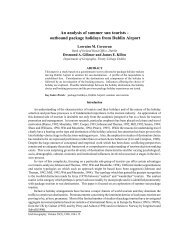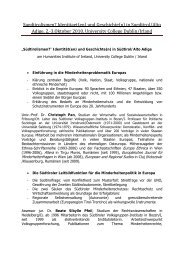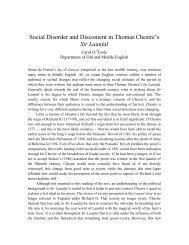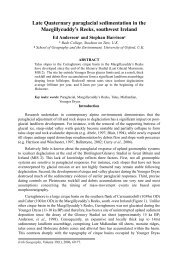Weaving the labyrinth of the text — the novel poetics of Goethe's ...
Weaving the labyrinth of the text — the novel poetics of Goethe's ...
Weaving the labyrinth of the text — the novel poetics of Goethe's ...
Create successful ePaper yourself
Turn your PDF publications into a flip-book with our unique Google optimized e-Paper software.
Schmeling, Manfred, Der <strong>labyrinth</strong>ische Diskurs, Frankfurt am Main, A<strong>the</strong>näum, 1987.<br />
Waugh, Patricia, Metafiction. The Theory and Practice <strong>of</strong> Self-Conscious Fiction,<br />
London & New York, Methuen, 1984.<br />
i<br />
Metafiction has been described as “fiction that includes within itself a commentary on its own narrative<br />
and/or linguistic identity” (Hutcheon, 1981, p. 1). Patricia Waugh lists a range <strong>of</strong> characteristics which are<br />
commonly found in metafictional <strong>text</strong>s <strong>—</strong> including <strong>the</strong> obtrusive narrator, <strong>the</strong> dramatisation <strong>of</strong> <strong>the</strong> reader<br />
role, Chinese box structures, self-reflexive images (such as mirrors and mazes) and parody <strong>of</strong> literary<br />
conventions <strong>—</strong> and comments: “In all <strong>of</strong> <strong>the</strong>se what is foregrounded is <strong>the</strong> writing <strong>of</strong> <strong>the</strong> <strong>text</strong> as <strong>the</strong> most<br />
fundamentally problematic aspect <strong>of</strong> that <strong>text</strong>” (Waugh, 1984, pp. 21-2).<br />
ii<br />
‘Mise en abyme’ has been defined as “any internal mirror reflecting <strong>the</strong> narrative whole by simple,<br />
repeated or spacious reduplication” (Dällenbach, 1977, p. 52). The term originated with André Gide who<br />
derived it from <strong>the</strong> heraldic emblem <strong>of</strong> a shield in whose centre is reproduced a miniature version <strong>of</strong> itself.<br />
Gide used <strong>the</strong> device in Les Faux-Monnayeurs where <strong>the</strong> central character, Edouard, is a <strong>novel</strong>ist working<br />
on a <strong>novel</strong> with <strong>the</strong> same title as, and a strong resemblance to, <strong>the</strong> <strong>novel</strong> in which he is a character.<br />
iii<br />
Ovid, Metamorphoses, Book 6, lines 68-9. Translation: Penguin Classics, 1971, p. 136.


